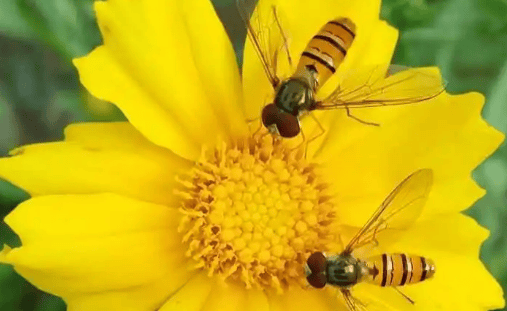Bees are highly social insects, and their living habits and characteristics occupy an important position in the ecosystem. The following is a detailed introduction to the characteristics and living habits of bees.

Features:
1. Body structure: bees The body is divided into three parts: head, thorax and abdomen. The head mainly includes eyes, antennae and mouthparts, which are used to sense the environment and collect food. There are three pairs of legs and two pairs of wings on the chest for walking and flying. The abdomen contains the digestive and reproductive systems.
2. Wings and flight: The wings of bees are thin and transparent, and are covered with fine veins, allowing them to fly efficiently. They usually perform a dance while flying to communicate with other bees and search for food.
3. Antennae: The antennae of bees are very sensitive and can sense the surrounding fragrance and vibration. This helps them find nectar and communicate with conspecifics.
4. Compound eyes: The compound eyes of bees are composed of thousands of small eyes, which can sense the surrounding light and movement, helping them navigate in the air and find food.
Life habits:
1. Social structure: A bee colony consists of a queen bee, several drone bees and a large number of worker bees. The queen bee is responsible for laying eggs and reproducing, the drones are responsible for mating, and the worker bees are responsible for collecting food, building nests and caring for the larvae.
2. Food collection: Bees mainly rely on nectar for food. They use their long mouthparts to suck nectar from flowers and bring it back to the hive for storage. Additionally, bees collect pollen as a source of protein.
3. Nesting: Bees will build nests underground or in tree holes to protect their larvae and store food. Each nest is made up of many hexagonal cells, each built by worker bees out of saliva and beeswax.
4. Division of labor and cooperation: In bee society, each member has a clear division of labor. Worker bees are divided into different levels based on age and experience, and worker bees from junior to senior are responsible for different tasks. This division of labor helps improve the efficiency of the entire group.

5. Migration: Bees in some areas will migrate when the seasons change. migration. They will follow the footsteps of the flowering period and migrate from one place to another to obtain sufficient food sources.
6. Defense: When bees feel threatened, they will attack through the stinger on their tail to protect themselves and the hive. The sting releases a chemical that causes pain and swelling in the victim.
In short, the characteristics and living habits of bees demonstrate their adaptability and intelligence. As an important part of the ecosystem, bees play an irreplaceable role in maintaining ecological balance and promoting plant pollination.

 扫一扫微信交流
扫一扫微信交流
发布评论